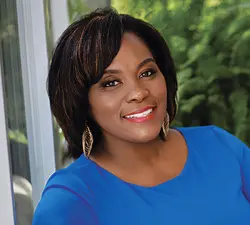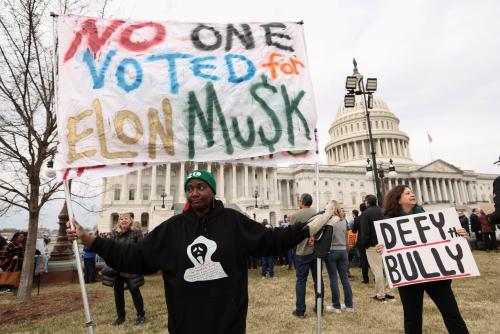Black History Month unveiled the long-awaited movie release of “Black Panther,” a project of Disney’s Marvel Studios. Released over the President’s Day weekend, the movie has grossed an estimated $700 million in global ticket sales in its first 12 days in theaters, and is on track to potentially hit the billion-dollar mark before it closes. The movie’s $242 million opening over the holiday weekend was the second-biggest debut ever, beating out “Star Wars: The Last Jedi” in four-day sales. Pre-sales for the movie were record-breaking, surpassing all prior Marvel movies for Fandango and IMAX movie services. Directed by Ryan Coogler (“Fruitvale Station” and “Creed”), “Black Panther” is also about to become the highest-grossing film made by an African American.
The movie’s release comes after a long history of overtly white representation in the nominees and winners at the Oscars. And the movie has precipitated a movement within the African American community as moviegoers adorn themselves with indigenous African clothing, celebrate the movie’s characters, and even register people to vote before and after screenings.
Who is the Black Panther?
The fictional superhero Black Panther, or T’Challa, is a king and ruler of the imagined “Wakanda,” an African country, whose land is rich with extraordinary resources like the metal Vibranium and the heart-shaped herb responsible for his enhanced powers. Created by Stan Lee and Jack Kirby for Marvel Comics in 1966, T’Challa is proficient in science, has rigorous physical abilities, and has amassed access to wealth and advanced technology to take down his enemies. Without presenting any spoilers, the latest Black Panther storyline dives into topics of race, addresses the cultural heterogeneity among people of African descent, and highlights the strengths of black women, who are depicted as queens, warriors, and scientists in the film. With a predominantly black cast, the movie also deconstructs stereotypes of men of color, families, and communities, deviating from what is often depicted in mainstream media.
The latter point is particularly important because it defies the age-old myths haunting black creators and their films that diversity in media is both unprofitable and impossible.
Hollywood, it’s about time
In 2016, the #OscarsSoWhite social media campaign forced Hollywood to revisit the issue of representation of diversity on screen, among movies producers and directors, and within the review board of the Academy of Motion Picture Arts and Sciences. According to research from the University of Southern California, African Americans represented 13.6 percent of characters in major film projects, compared to 70.8 percent of white characters in 2017. African American directors were also sparsely reflected at just 5.6 percent when compared to their peers that same year.
The Academy acted quickly to change this narrative through strategic and systematic efforts, some of which are showing up in this year’s Oscar nominations. Jordan Peele, the African American director of the movie “Get Out” is nominated for best director, best original screenplay, and best picture. In 2017, “Get Out” became the the highest grossing debut film based on an original screenplay, bringing in $255 million worldwide to date. Dee Rees’s “Mudbound,” supported and distributed by Netflix, has become the first film to have an African American female nominated for best adapted screenplay, and a range of other nominations, ranging from best supporting actress to best original song in 2018.
While Disney will definitely recoup Ryan Coogler’s $200 million budget (plus $150 million spent on publicity) for “Black Panther,” the company will also benefit from its gamble on a predominantly black cast, which the broader motion picture industry has historically shied away from and global audiences have rarely supported. In the U.S., opening weekend ticket sales were largely attributed to diverse audiences: 37 percent of moviegoers were African American, followed by 35 percent white, and 18 percent Hispanic. Contrary to beliefs about black films, “Black Panther” has been well received and quite profitable overseas too, with openings still scheduled abroad.
But the true winner is, Wakanda
“Black Panther” has unequivocally become one of many recent inflection points for the African American community, especially following the success of extraordinary black voter turnout in tough southern elections. It could be argued that since the end of the historic and groundbreaking Obama presidency, black people have been searching for a superhero, or a “yes we can” leader like T’Challa. For two hours, he becomes more than a comic-book superhero. He transforms into a symbol of hope for African Americans, much like President Obama was during the previous eight years.
Lupita Nyong’o, one of the stars of the movies and a Kenyan citizen, described the imaginary Wakanda as a “…re-imagining of what would have been possible had Africa been allowed to realize itself for itself. And that’s a beautiful place.” Her comments align with early notions of Afrofuturism, which elevates the possibilities of technology and innovation across the arts, sciences, and music for black people. And more important, Wakanda is an uncolonized nation where moviegoers of color are able to imagine life without rulers, and for African Americans, a place without Trump.
Today, that beautiful place for African Americans is free of the vitriolic speech and actions precipitated under the current Trump administration, which fuels the bitterness of white nationalism. It is a place where people of color and other empathetic groups do not have to live in a nation where the president calls out your continent as one of many (expletive) countries (pun intended), or hesitates to call out racist evildoers in Charlottesville, Virginia, even after a resulting death.
For black moviegoers, “Black Panther” offers an imagined reality free of the constraints and horrors of white supremacy. While some may push back on the resurgence of black pride and consciousness as an appropriate response to current circumstances, it is clear that the symbolic representation emerging from the film is helping African Americans reimagine what was historically possible, and what can be realized now to counter the current administration’s racially divisive public policies and rhetoric.
Clearly, this is not your traditional Marvel film. It has demonstrated the strong economic power of diversity and inclusion on screen, and restarted nostalgic conversations on the potential of black power. What Hollywood and African Americans decide to do next is undetermined. But, if the movie winds up as a moment rather than a movement, it will still be recognized as one of “the firsts” that deserves a place on the mantle of achievements recognized during Black History.
The Brookings Institution is committed to quality, independence, and impact.
We are supported by a diverse array of funders. In line with our values and policies, each Brookings publication represents the sole views of its author(s).




Commentary
Black Panther: Lessons in Hollywood diversity and black pride
February 26, 2018